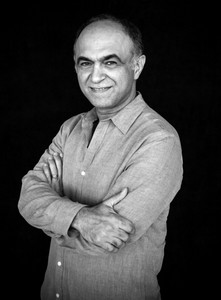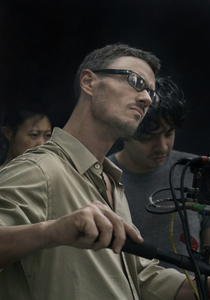Filmatic Festival: Expanding Cinema, Collaboration and Consciousness
By Tiffany Fox, (858) 246-0353, tfox@ucsd.edu
San Diego, Calif., April 25, 2014 — In a world where people prefer to be alone together, what will become of filmmaking and film-going?
|
Webb notes that movie theater attendance in the U.S. is declining, in part due to the array of technologies that make movie-watching at home increasingly personalized and interactive. But she says the experience of watching something ‘together’ hasn’t completely lost its appeal.
“People are watching films alone on their smartphones and tablets but they’re also participating with each other using technologies like social media,” she says. “Meanwhile, technology also allows all of us to create content all the time. How is all of this changing our experience of what movies are?”
The Filmatic schedule offers a taste of what might be coming to a theater near you. “Turbulence,” a romance being screened in the QI Auditorium at 8 tonight and Saturday, allows the audience to determine the plot of the film in real-time by downloading and using a companion app (the app provides 17 alternative endings). Another film, the Dutch techno-thriller “APP,” also makes use of a smartphone app to provide parallel narratives and alternative angles. “Film Karaoke,” one of the festival’s interactive installations on offer at QI throughout the weekend, harnesses green-screen technology to immerse participants in famous movies from the past. Instead of singing, you recite lines, in character, from pivotal scenes in “The Godfather,” “Sabrina,” or “Ferris Bueller’s Day Off.”
Webb also chose artists and works for the fest that explore themes germane to modern society — themes like narcissism and surveillance. Both are explored in filmmaker Neil Kendricks’ “Alt.pictureshows: Narcissus’ Electronic Cave,” a series of films being screened in the QI Theater (which has been tricked out with hot pink beanbags for the occasion). One of the films, “The Last Days of Peter Bergmann,” weaves surveillance video with interviews to explore the man’s mysterious disappearance in 2009. In “Beholder,” vivid color photographs are combined with dream-like moving images to question perceptions of beauty through voyeuristic observations of two women immersed in the private act of “putting on a face.”
|
Expanded cinema, it turns out, also makes for expanded collaboration, which Webb says is one of the goals she established for the festival. Not only are many of the films and installations being screened in the QI Auditorium, Theater, StarCAVE, NexCAVE and Recombinant Media Lab, but several affiliates of QI are on the docket for the fest. Shahrokh Yadegari — a professor of theater and dance at UCSD — is behind the installation known as “Music for Film,” an ever-changing music soundscape mixed with a finite state machine that is being held in the QI courtyard each day of the fest.
|
At least one collaboration ‘spontaneously erupted’ at Filmatic: Eric Hamdan, an Audio Research Engineer in QI's Sonic Arts R&D group, spent some of the evening recording sound samples from the event’s installations, including "Music for Film" and “Soldier,” a film installation by sound artist Yvette Jackson and visual artist Ava Porter that juxtaposes warfare and popular culture. Hamdan recorded the sounds with special in-ear binaural microphones that, when listened to with headphones or with Sonic Art’s specially designed speaker arrays, reveal a 3D audio experience that surpasses normal stereo reproduction in its lifelike vividness.
Film purists might worry that all this immersive technology will interfere with the experiencing of simply sitting down and watching a film — feature films are still preceded by trailers asking the audience to turn off their smartphones, after all.
But Filmatic, says Webb, is an experiment in “going with it” instead of resisting technology, of using the ubiquity and versatility of technology to “make the film-going experience as untethered as possible.”
And Webb notes that one of the films — David Michalek’s “Portraits in Dramatic Time” — was shot using ultra high-resolution, high-definition cameras but then slowed down to a ‘glacial pace.’
“The work stems from the Slow Art Movement, and it’s really about the moments between frames,” she notes. “In our fast-paced culture it’s asking you to stay still and slow down for a minute.”
(Sure, just so long as we can still tweet about it afterwards.)
Media Contacts
Tiffany Fox, (858) 246-0353, tfox@ucsd.edu
Related Links




